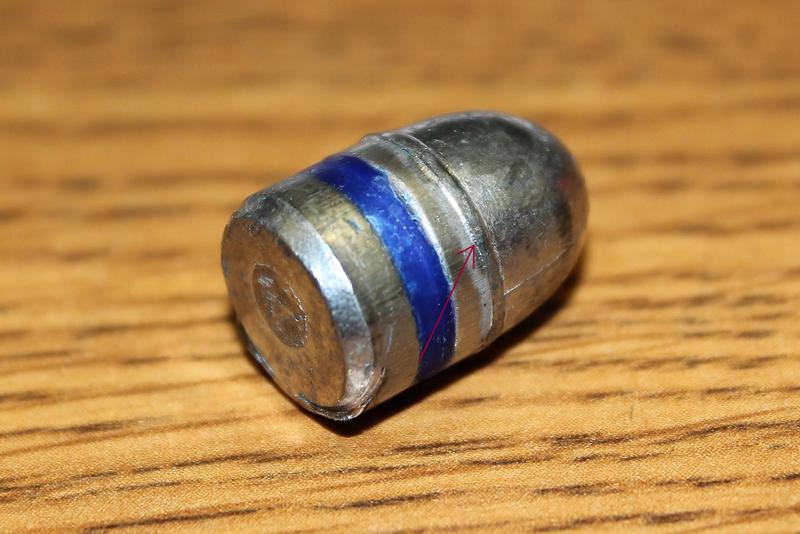By mistake I bought some lead bullets thinking they were plated . Although not a big deal I'd rather not deal with lead in general . Now that I have 500 of them I'm going to do some load development . When I find a decent load I'll just load them all up and put away for a rainy day .
I have a few questions on this subject that came up while doing my usual test with dummy rounds before I start a completely new load .
1) I have more HS-6 powder then any other . Will that be a good powder for 230gr RN lead bullets ? ( other powders I have = Longshot , unique , Titegroup , CFE pistol , Auto comp )
2) Because these are cheap lead bullets and I'll be just putting these rounds in storage I plan to use mixed off brand brass ( PMC , Aguela , GFL , some R P , etc ) Any issues with that idea ?
3) I did some seating , crimping and plunk test to see what will work .
1st , I'm using the Lee 4 die set with FCD . When using the FCD even with NO crimp adjusted into the die I see I'm still swaging the bullet down a bit . About .001 to .0015 at the the area of the bullet where the case mouth would be . The base of the bullet is still the correct diameter after pulling . I searched the forum and found a old thread talking about the FCD doing this on 45 rounds . The OP did not have any real issues per-say , just that he noticed it happening . What's the significance of this happening if any ?
2nd , how much crimp on a bullet that does not have a crimp grove ? I tested 5 different crimp strengths from none just that slight swage to heavy crimp that indented the bullet about .011 . The dents in the bullets were ( .0015 , .003 , .006 . 009 .011 ). All 5 past the plunk test and measured the same depth from head to top of barrel area .
4) I was reading my Lyman cast bullet manual and it was saying because lead bullets tend to have less pressure to expand the case and seal the chamber . Some times annealing is needed . I do anneal rifle cases when needed but have to assume the book is referring to larger cases like 45-70 and not the 45acp case . The 45acp case seems to small to anneal with any real control . This was more of a hmm thing and I figured I'd ask for your thoughts ?
That's my first few questions for now .
I have a few questions on this subject that came up while doing my usual test with dummy rounds before I start a completely new load .
1) I have more HS-6 powder then any other . Will that be a good powder for 230gr RN lead bullets ? ( other powders I have = Longshot , unique , Titegroup , CFE pistol , Auto comp )
2) Because these are cheap lead bullets and I'll be just putting these rounds in storage I plan to use mixed off brand brass ( PMC , Aguela , GFL , some R P , etc ) Any issues with that idea ?
3) I did some seating , crimping and plunk test to see what will work .
1st , I'm using the Lee 4 die set with FCD . When using the FCD even with NO crimp adjusted into the die I see I'm still swaging the bullet down a bit . About .001 to .0015 at the the area of the bullet where the case mouth would be . The base of the bullet is still the correct diameter after pulling . I searched the forum and found a old thread talking about the FCD doing this on 45 rounds . The OP did not have any real issues per-say , just that he noticed it happening . What's the significance of this happening if any ?
2nd , how much crimp on a bullet that does not have a crimp grove ? I tested 5 different crimp strengths from none just that slight swage to heavy crimp that indented the bullet about .011 . The dents in the bullets were ( .0015 , .003 , .006 . 009 .011 ). All 5 past the plunk test and measured the same depth from head to top of barrel area .
4) I was reading my Lyman cast bullet manual and it was saying because lead bullets tend to have less pressure to expand the case and seal the chamber . Some times annealing is needed . I do anneal rifle cases when needed but have to assume the book is referring to larger cases like 45-70 and not the 45acp case . The 45acp case seems to small to anneal with any real control . This was more of a hmm thing and I figured I'd ask for your thoughts ?
That's my first few questions for now .
Last edited:


